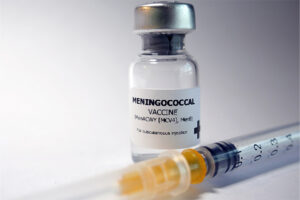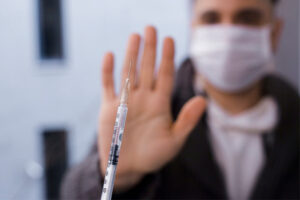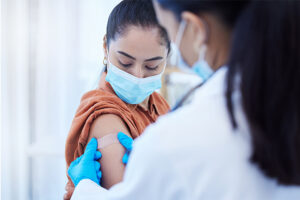Infectious Diseases
Adolescent Vaccinations
Clinical Roundup: Vaccine-Preventable Morbidity and Mortality Among Adolescents
Vaccination hesitancy can lead to undervaccination, and that can result in significant morbidity and mortality from diseases that are largely preventable. Education and mandates can only go so far in ensuring that adolescents receive all recommended vaccines. Health care providers need to understand and address the concerns that their patients have to bring the benefits of vaccination to their communities.
Mortality is the most feared outcome from vaccine-preventable infectious diseases, but it is not necessarily the most common, as patients more often experience morbidity from complications and long-term sequelae. While vaccine-preventable diseases can potentially be fatal, this is not very common, mainly because of routine vaccination. During meningococcal disease outbreaks, a 10% fatality rate can occur, meaning 1 of every 10 adolescents could succumb to the disease. But nonfatal, severe meningococcemia and meningitis can also have devastating long-term effects, including organ damage, limb necrosis requiring amputations, and neurologic complications.
The consequences of untreated or unrecognized human papillomavirus (HPV) infection in nonvaccinated adolescents could include the development of precancerous lesions and progression to cervical cancer, requiring treatments that could have an impact on a woman’s options for reproduction. Men with HPV infections also have a risk of developing penile, rectal, or oropharyngeal cancers, which can be prevented through vaccination with HPV vaccines.
Vaccines for COVID-19 and influenza prevention are important in pediatric and adolescent populations. Adolescents are at greater risk for the development of COVID-19 complications, such as multisystem inflammatory syndrome in children and myocarditis. An increase in severe disease is also seen for COVID-19 and influenza in children under 1 year of age. It has been shown that children and adolescents can experience severe consequences of COVID-19 and influenza, even in the absence of underlying medical conditions, and that vaccination can prevent these complications.
We should also be mindful that adolescents play a role in the transmission of vaccine-preventable diseases to other patient populations, particularly young infants and persons with increased risk of complications due to advanced age or underlying medical conditions. Adolescents are at increased risk of contracting infectious diseases that are transmitted by contact with respiratory and genital secretions (if they engage in sexual activities). These infections can have consequences for those around them who are not adequately vaccinated. For example, pertussis is unlikely to cause death in adolescents, but infants who are too young to be vaccinated and who are exposed to pertussis by infected adolescents will have increased mortality. The same concerns arise for COVID-19 and influenza, and for other contacts of adolescents, such as older family members and those with weakened immune systems.
One important message, therefore, is that vaccines are recommended for adolescents because they protect against infectious diseases that cause very significant morbidity and mortality, not only directly in the adolescent population but also indirectly to younger children, older adults, and people with immune deficiencies who come into contact with them.
I think that vaccine mandates should be in place for diseases that are easily communicable in the general population. There are good reasons that vaccinations for pertussis; measles, mumps, and rubella; and pneumococcal infections are required for school attendance. After all, you do not expect to have a car accident when you leave the house in the morning, but you put your seatbelt on and obey the speed limit. That is what vaccines are for: to minimize risk, not only to you but also to others. Some parents say that they do not want to take a risk by having their child get a vaccine; however, if an unvaccinated child is in school, they are benefiting from all of the vaccinated children who are also in school taking whatever small risk is associated with vaccination. So, while it is an individual choice, it also affects society. Unfortunately, a person’s desire for societal benefit is not really as strong as it used to be, even though the good of society should sometimes outweigh an individual’s vaccination preference.
States that allow philosophical exemptions to vaccine requirements have some of the lowest immunization rates in the country. That is likely not a coincidence. And, when parents utilize these exemptions with their children, they are decreasing the overall community’s vaccination rate. A number of states are trying to require people who seek a philosophical exemption to explain themselves and their philosophy to a health care provider, who would then approve or deny the exemption. If passed, such laws put the onus back on the provider, which may not be fair, but these states are trying to make the exemption process a little stricter.
Of course, there is not a one-size-fits-all way to address vaccine hesitancy because there are different reasons for it. If we do not listen and try to understand why someone is hesitant to be vaccinated or to have their child vaccinated, we are likely to go off on a wrong tangent. I ask people who are hesitant to explain what concerns and worries them to help me understand.
I worry about how our political climate is affecting health care decision making. For example, legislators in Idaho introduced a bill last year that would make it a crime to administer mRNA-based vaccines, even if it is a cancer vaccine. Many people have deeply held convictions that the government cannot tell them what they can and cannot do (even though, to some extent, it can). Perhaps vaccine policymakers should be thinking less in terms of mandates and more in terms of strategies based on social engineering, psychology, and sociology to increase vaccination rates.
One challenge in getting teenagers interested in receiving recommended vaccines is their tendency to focus only on the immediate future. It is often difficult to get them to think further than a few hours ahead. You might have better luck convincing them to be immunized against influenza because they will be less likely to get influenza the day before the SATs, as opposed to touting the broader community benefits of vaccination. Sitting for the SATs without headache and myalgias is an immediate, tangible benefit to them.
How do you convince adolescents to get the HPV vaccine today so that 20 years from now they will not be one of the unlucky people who develop cancer? That deferred benefit often does not register. While the purpose of the HPV vaccination program is cancer prevention—and I would never minimize that—when talking to a teenager, I might also mention the prevention of genital warts, which is a much more immediate, tangible benefit to them. In a strange way, genital warts may be uglier to a teenager than the cancer that might not occur for another 20 years. I am not suggesting disingenuousness here, only a pathway that may help providers connect better with their adolescent patients.
Another issue to keep in mind is that teenagers may have different concerns about different vaccines. The reasons teenagers may not want to get the HPV vaccine may be totally different from why they are hesitant to get the meningococcal vaccine. For example, the issue of sexual morality may play into the HPV vaccination decision, but, for the meningococcal vaccine, it may have more to do with the extreme rarity of the disease or perhaps the safety of the vaccine. Vaccine hesitancy is also driven by societal and cultural issues, which makes it important to understand a person’s background and history.
American Academy of Pediatrics. Child vaccination across America. Accessed November 27, 2023.
https://downloads.aap.org/AAP/Vaccine/index.html
Bekkat-Berkani R, Fragapane E, Preiss S, et al. Public health perspective of a pentavalent meningococcal vaccine combining antigens of MenACWY-CRM and 4CMenB. J Infect. 2022;85(5):481-491. doi:10.1016/j.jinf.2022.09.001
Cuccaro PM, Choi J, Gabay EK, et al. Lessons learned from all for them: best practices for a cross-collaboration approach to HPV vaccination in public schools. Vaccines (Basel). 2023;11(5):946. doi:10.3390/vaccines11050946
Ernst K. Novel strategies to inhibit pertussis toxin. Toxins (Basel). 2022;14(3):187. doi:10.3390/toxins14030187
Marshall GS, Fergie J, Presa J, Peyrani P. Rationale for the development of a pentavalent meningococcal vaccine: a US-focused review. Infect Dis Ther. 2022;11(3):937-951. doi:10.1007/s40121-022-00609-9
Seither R, Calhoun K, Yusuf OB, Dramann D, Mugerwa-Kaujja A, Knighton CL, Black CL. Vaccination coverage with selected vaccines and exemption rates among children in kindergarten — United States, 2021–22 school year. MMWR Morb Mortal Wkly Rep. 2023;72(2);26-32. doi:10.15585/mmwr.mm7202a2
Shannon CL, Klausner JD. The growing epidemic of sexually transmitted infections in adolescents: a neglected population. Curr Opin Pediatr. 2018;30(1):137-143. doi:10.1097/MOP.0000000000000578
Stultz JS, Eiland LS. A review of the data supporting use of COVID-19 vaccinations in the pediatric population. Ann Pharmacother. 2023;57(11):1328-1340. doi:10.1177/10600280231156625
Suran M. Physicians say an Idaho house bill that would criminalize administering mRNA vaccines is an attack on the medical profession-even if it doesn’t become law. JAMA. 2023;329(13):1051-1052. doi:10.1001/jama.2023.3401













